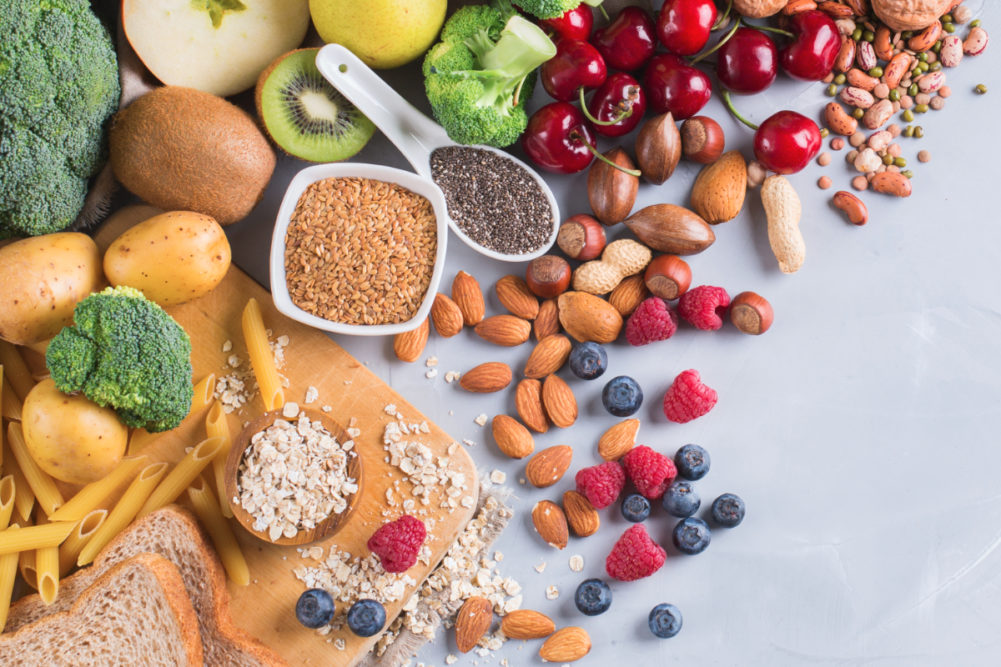KANSAS CITY — Half of all food and beverage product launches in the United States promote a single hero ingredient, but opportunities exist for food and beverage marketers to promote the benefits of ingredient pairs, according to Spoonshot, an artificial intelligence-powered food and beverage insights platform.
“Not all nutrients we consume are completely absorbed,” said Kishan Vasani, co-founder and chief executive officer of Spoonshot, during a presentation at the virtual Trends and Innovation seminar hosted by Food Business News. “By using synergistic food blends, we can enhance the potential benefits of eating ingredients and the bioavailability of nutrients.”
Black pepper helps increase absorption of curcumin from turmeric, which offers a host of antioxidant and anti-inflammatory benefits. Vitamin C and zinc combine to provide greater protection for the immune system than either nutrient delivers on its own. Spoonshot predicted these and other ingredient blends will drive a new wave of functional food and beverages in 2022 and beyond.
“This opens up some scope for labeling and promotions,” Ms. Vasani said. “Research into food synergies can pave the way for some unique ingredient combinations that further the area of functional food, rather than just focusing on individual novel ingredients.”
Coping with COVID aftereffects
Familiarity with the gut-lung axis increased during the pandemic, creating opportunities for food and beverage products that promote respiratory health.
When gut bacteria break down dietary fiber, certain metabolites are produced that act as signaling agents in the lungs, reducing inflammation and boosting immunity. This may explain why asthma, chronic obstructive pulmonary disorder and some allergies are more common in people with gastrointestinal issues.
Probiotics present one potential solution, with early research pointing to probiotic therapies offering positive outcomes for viral respiratory tract illnesses. One study found a combination of five probiotic strains reduced symptoms of infections by more than 27%.
“This may find acceptance with consumers,” Mr. Vasani said. “Consumers associate a wide range of health benefits with probiotics, including dealing with inflammation, reducing the risk of viral infection and boosting immunity. These are closely linked to lung health, and COVID has raised a lot of concerns over lung health in the public discourse.”
Opportunities exist for food and beverage marketers to help address another aftereffect of COVID-19: the loss of smell and taste.
Parosmia, a disorder that distorts odors and taste and often makes them unpleasant, is a common symptom of COVID-19 that can linger for weeks and even months after recovery. Familiar foods like onion, coffee, chocolate, garlic, red meat and eggs often are cited as common triggers.
Potential solutions include crunchy or crispy textures, which extend taste by keeping food in the mouth longer. Foods that stimulate trigeminal sensations like heat, tingling and cooling also help, along with umami flavors that increase saliva flow.
“These elements are fairly easy to implement and are a potential area of focus for restaurants,” Mr. Vasani said. “This is something packaged food companies can also do, but restaurants have the benefit of being able to customize based on a consumer’s trigger ingredients.”
Eco-friendly innovation
Advancements in cell-based meat made headlines in 2020, with Singapore becoming the first country to approve cultured meat and Israeli startup Future Meat bringing the product cost for a chicken breast under $4.
Other lab-grown foods are emerging. Companies including Perfect Day are creating dairy protein by genetically modifying microflora. The animal-free dairy proteins are used to make other products, like ice cream. Startup Atomo Molecular Coffee is developing lab-grown beanless coffee.
“By the middle of the 21st century, the demand for food is going to be about 60% higher than it is today,” Mr. Vasani said. “Lab-grown is an efficient way of producing rapidly without putting as much stress on our natural resources.”
Spoonshot predicted grains will be the next growth area for plant-based milk. Barley in particular is emerging as a promising contender. The hardy, drought-resistant ingredient requires less water than oats and is the world’s fourth most abundant grain. It is more widely available and affordable than oats, Mr. Vasani said.
“Barley isn’t widely used in the food industry, except to make malt beer, but we’re starting to see some companies looking to change this,” he said.
Bright Barley was the first barley milk in the United Kingdom. The low-fat beverage is marketed as an ancient grain product and a good source of fiber. Several alcohol companies are exploring opportunities in the space. AB InBev has invested in Take Two Foods and provides it with spent barley grain from brewing. Molson Coors recently announced plans to launch a grain-based milk.
“Such milks can see growth as allergy friendly alternatives not just to dairy, but to all sorts of nuts and soy, making them potentially more inclusive,” Mr. Vasani said. “Eventually, plant-based milks like barley will emerge as a middle-market product and make it easier and more affordable for a wider audience to take up a plant-based lifestyle.”
Milk alternatives made with spent grain from brewing also speak to the mainstreaming of upcycling, Spoonshot’s final trend prediction for 2022.
Business interest in upcycled ingredients increased 162% in 2020, even as consumer awareness remains low. Just 10% of consumers are familiar with the topic, according to a study in Food and Nutrition Sciences. Once educated about the topic, 80% said they would consider purchasing products with upcycled ingredients in the future.
“Most of the companies that currently sell upcycled foods are startups, but they can reach a wider audience through partnerships with other companies,” Mr. Vasani said. “That wider reach will help with the awareness problem.”
Mondelez International’s innovation hub SnackFutures supported the development of CaPao and Dirt Kitchen, two emerging brands utilizing upcycled ingredients. Barry Callebaut is working on extracting vanillin from hazelnut shells, and Nestle SA is exploring the use of coffee fruit, cocoa pulp and other byproducts of its own production processes to make new consumer products.






